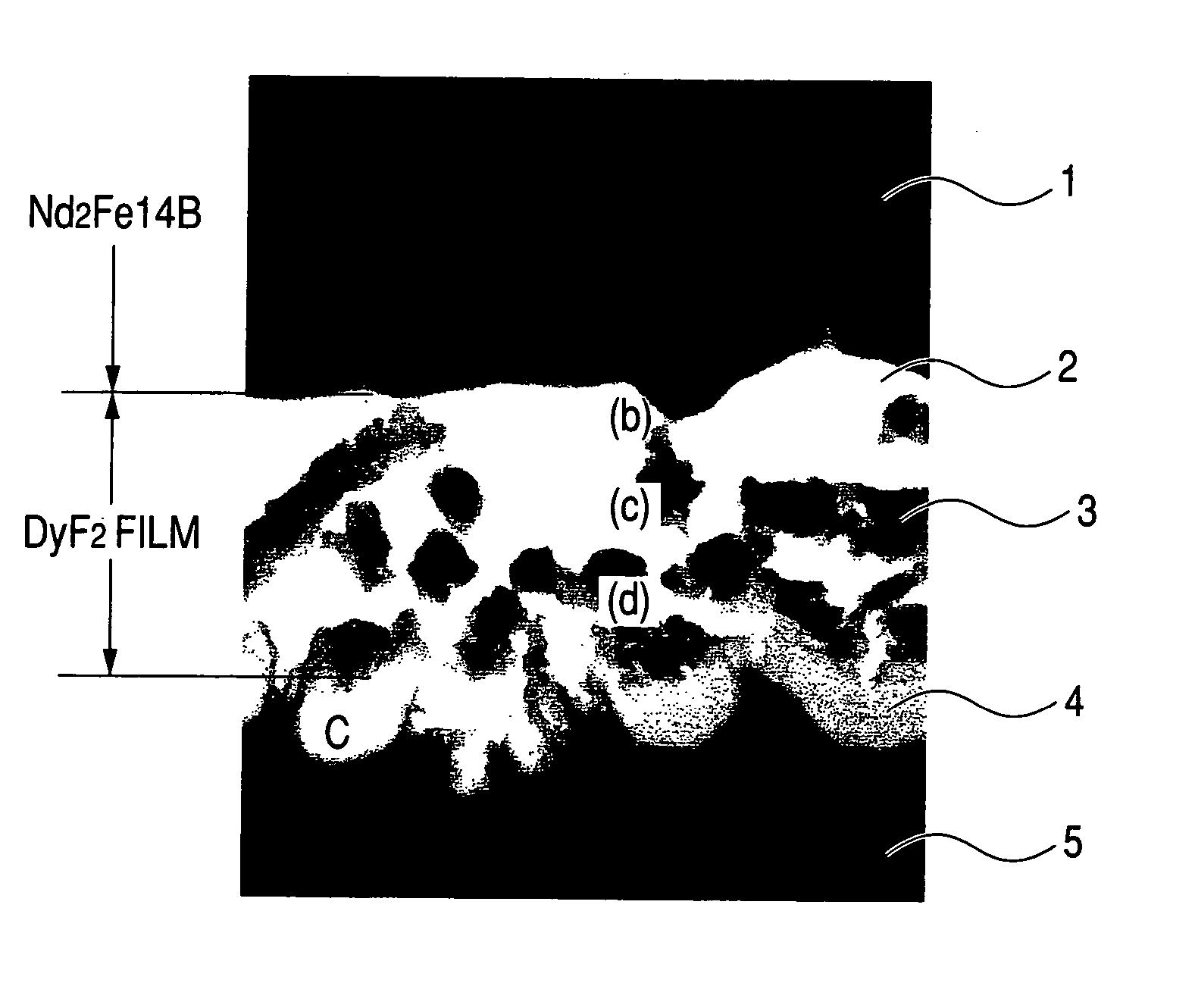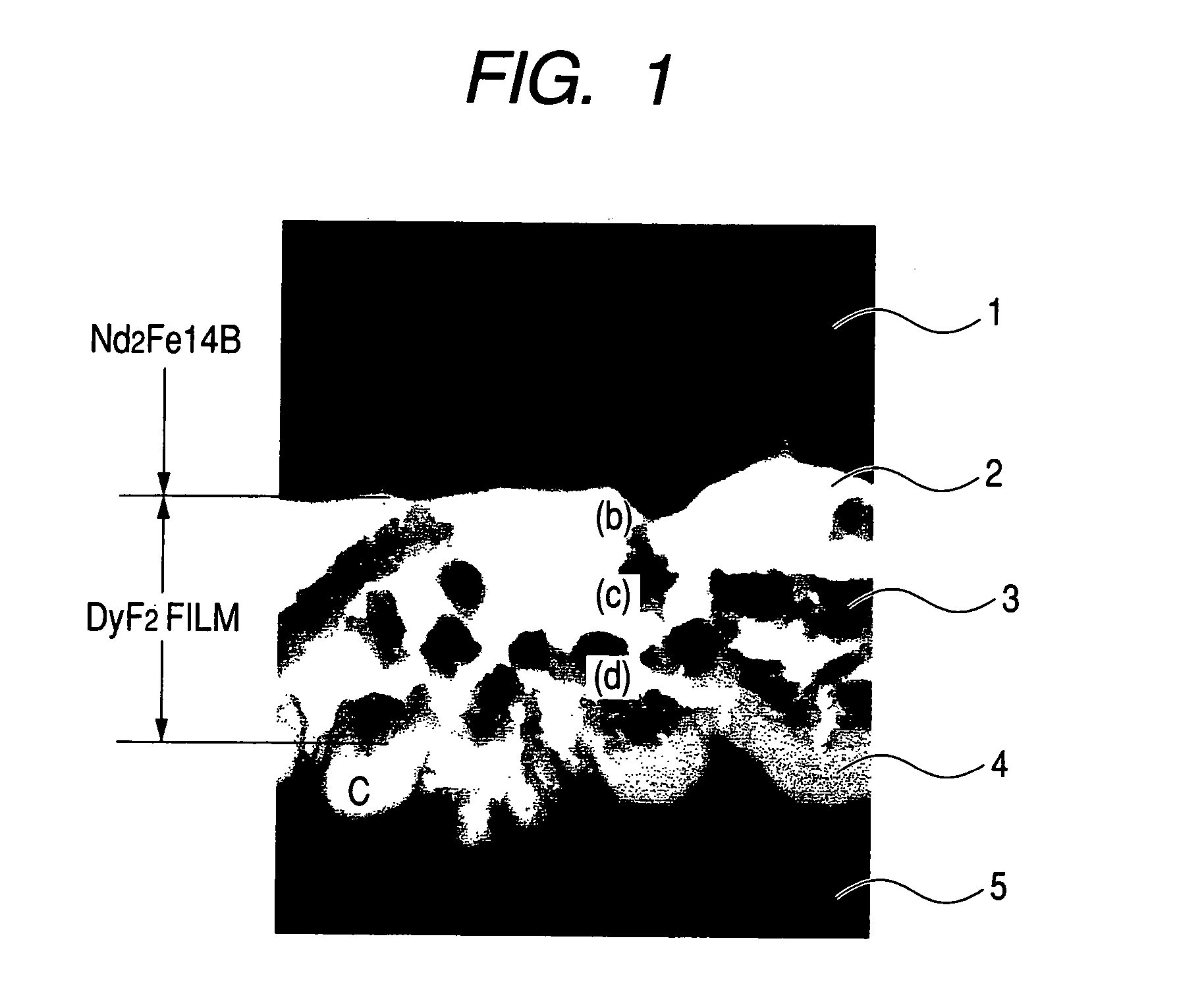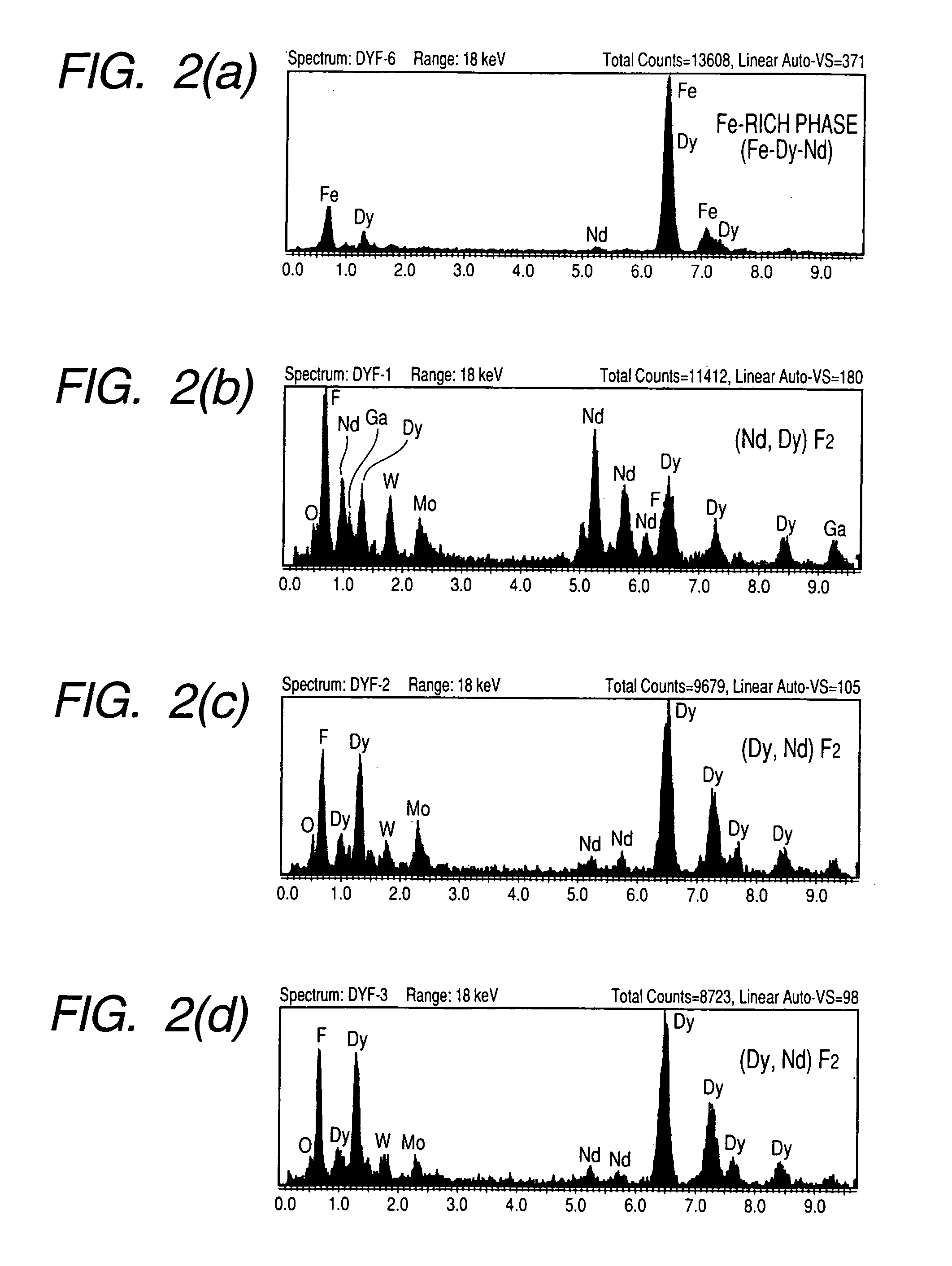Magnetic material, magnet, and rotating machine
a technology of magnetic materials and rotating machines, applied in the direction of magnetic bodies, natural mineral layered products, synthetic resin layered products, etc., can solve the problems of difficult to use this type of magnet in a rotating machine that requires a high torque, low energy product, etc., and achieves reduced residual magnetic flux density, high efficiency, and reduced energy product.
- Summary
- Abstract
- Description
- Claims
- Application Information
AI Technical Summary
Benefits of technology
Problems solved by technology
Method used
Image
Examples
first embodiment
[0021] [First Embodiment]
[0022] A NdFeB alloy is a powder with a particle diameter of 1 to 1000 μm to which hydrogenation and dehydrogenation processes have been applied. The coercive force of the powder is 16 kOe at room temperature. A fluorine compound to be mixed with this NdFeB (the main phase is Nd2Fe14B) is NdF3. Raw powder, NdF3, is milled in advance to an average particle diameter of 0.01 to 100 μm. A mixture of the NdFeB powder and NdF3 is supplied between twin rolls. To make the shape of the fluorine compound powder like a layer, the roll surface temperature is raised to 300° C. to 600° C., allowing the NdFeB powder and fluorine compound to be deformed easily by the twin rolls. The fluorine compound and the NdFeB powder are deformed by the twin rollers into a flat shape. The pressurizing force was 100 kg / cm2 or more. A layer-like fluorine compound is formed on the surface of the magnetic particle pressurized by the twin roller. A fluorine compound may be further mixed and ...
second embodiment
[0023] [Second Embodiment]
[0024] Treatment liquid for forming a dysprosium (Dy) fluorine compound coating films was prepared as follows:
[0025] (1) Four grams of Dy acetate or Dy nitrate, which is salt with high solubility, was added to 100 mL of water. The salt was completely dissolved by using a shaker or ultrasonic agitator.
[0026] (2) Hydrofluoric acid diluted to about 10% was gradually added by an equivalent for a chemical reaction by which DyF3 is created.
[0027] (3) The solution in which gelled DyF3 was precipitated was agitated by an ultrasonic agitator for one hour or more.
[0028] (4) Centrifugal separation was performed at a rotational speed of 4000 rpm. Then supernatant fluid was removed and methanol was added by almost the same amount.
[0029] (5) The methanol solution including gelled DyF3 was agitated to form a complete suspension. The suspension was agitated by an ultrasonic agitator for one hour or more.
[0030] (6) Operation in (4) and (5) was repeated 4 times until n...
third embodiment
[0040] [Third Embodiment]
[0041] Treatment liquid for forming neodymium (Nd) fluorine compound coating films was prepared as follows:
[0042] (1) Four grams of Nd acetate or Nd nitrate, which is salt with high solubility, was added to 100 mL of water. The salt was completely dissolved by using a shaker or ultrasonic agitator.
[0043] (2) Hydrofluoric acid diluted to about 10% was gradually added by an equivalent for a chemical reaction by which NdF3 is created.
[0044] (3) The solution in which gelled NdF3 was precipitated was agitated by an ultrasonic agitator for one hour or more.
[0045] (4) Centrifugal separation was performed at a rotational speed of 4000 rpm. Then supernatant fluid was removed and methanol was added by almost the same amount.
[0046] (5) The methanol solution including gelled NdF3 was agitated to form a complete suspension. The suspension was agitated by an ultrasonic agitator for one hour or more.
[0047] (6) Operation in (4) and (5) was repeated 4 times until negat...
PUM
| Property | Measurement | Unit |
|---|---|---|
| particle diameter | aaaaa | aaaaa |
| temperature | aaaaa | aaaaa |
| temperature | aaaaa | aaaaa |
Abstract
Description
Claims
Application Information
 Login to View More
Login to View More - R&D
- Intellectual Property
- Life Sciences
- Materials
- Tech Scout
- Unparalleled Data Quality
- Higher Quality Content
- 60% Fewer Hallucinations
Browse by: Latest US Patents, China's latest patents, Technical Efficacy Thesaurus, Application Domain, Technology Topic, Popular Technical Reports.
© 2025 PatSnap. All rights reserved.Legal|Privacy policy|Modern Slavery Act Transparency Statement|Sitemap|About US| Contact US: help@patsnap.com



